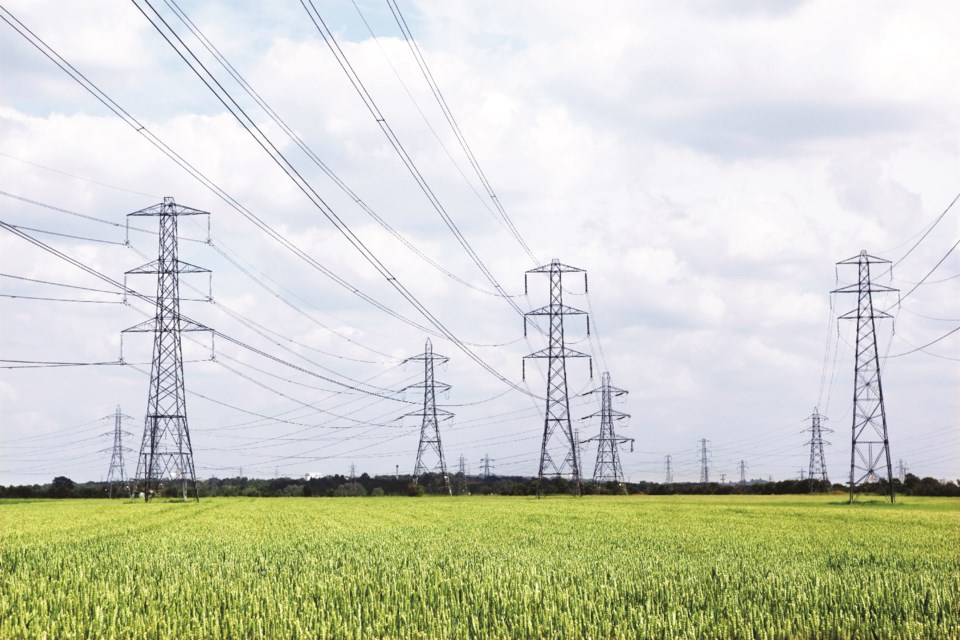LAKELAND – Alberta and Ontario power generation companies have partnered to study the feasibility of deploying grid-scale small modular reactors (SMRs) as a source of clean, nuclear energy in Alberta.
Capital Power Corp. and Ontario Power Generation (OPG) announced on Jan. 15 in Edmonton the feasibility assessment will be completed in two years. And Ken Hartwick, CEO of OPG, said the two companies are working to deploy four SMRs by late 2028, and have them online in early 2029.
Alberta Minister of Affordability and Utilities Nathan Neudorf, Alberta Minister of Energy and Minerals Brian Jean, and Ontario Minister of Energy Todd Smith were present during the announcement.
Neudorf said a transition approach to clean energy can be fast and good, but that would mean Albertans would suffer “catastrophic” consequences such as frequent blackouts or brownouts as current clean energy options cannot meet the province’s electricity demand. This approach “would also mean expensive... spending billions upon billions of dollars in the transition.”
Using the weekend’s extreme cold weather as an example, Neudorf said wind power stopped blowing, and solar energy generated at about 25 per cent capacity, and less after sunset.
“Meanwhile, we saw demand hit record highs [and] we were also hit with multiple grid warnings.”
Neudorf said the other approach for clean energy transition is by “doing it right and affordably,” while ensuring the lights stay on.
“This goal can be attained in a manner that isn't unnecessarily or unfairly punitive to Alberta taxpayers or ratepayers and their families. And it can be done in a way that encourages investment and innovation,” said Neudorf, suggesting SMRs will play a strong role in this approach.
Ontario Minister of Energy Todd Smith agreed with Neudorf, adding natural gas generation has been a key to keeping the lights and heat on in Alberta. Meanwhile, in Ontario, it was nuclear power that kept the power on, and natural gas to a smaller extent.
Smith also said Ontario has been able to export thousands of megawatts of excess power from its natural gas to jurisdictions like New York and Michigan, due to its nuclear fleet.
“And for our part, Ontario is looking forward to leveraging our world class nuclear expertise so that more jurisdictions have access to that reliable baseload power,” said Smith, which involves collaboration with other provinces, such as Alberta, Saskatchewan, and New Brunswick.
Energy demand
Capital Power president and CEO Avik Dey also said that with increased electrification and population growth, the global energy demand is projected to increase by around 50 per cent by 2050.
“Creating a carbon-neutral energy system that prioritizes reliability and affordability while accommodating growing demand is one of the most unprecedented transitions of our time,” said Dey.
When a member of the media asked how SMRs can achieve that goal, as opposed to CANDU (Canada Deuterium Uranium) – a type of big nuclear reactor that generates electricity – Smith answered first.
He noted that Ontario operates 10 CANDU reactors, so they’re not excluding the use of larger nuclear reactors in clean energy transition. “But, we think both technologies go really well because of the way the system operates and the system demands,” he said.
Smith explained that certain grids have certain electric demands. For example, in some grids, they don’t need 1,000 or 2,000 megawatts to function. Some grids require less.
Dey agreed, saying that SMRs are a viable size for an individual power generation facility.
In addition, Dey also explained that modularization of nuclear reactors is a critical and cost-effective component due to their smaller size, decreasing construction time as opposed to a large CANDU reactor.
OPG’s CEO, Ken Hartwick, spoke about the potential of exporting nuclear energy to other jurisdictions by building a supply chain. “We want to get the technology far enough. We want to get our supply chain, because one of the things that we've seen on the CANDU reactors is we have an amazing supply chain in Canada.”
SMRs potential in different applications
Alberta Minister of Energy and Minerals Brian Jean, who is also the MLA for Fort McMurray-Lac La Biche, was also present at the announcement. Jean said jurisdictions around the world are pursuing SMR.
“SMRs truly have the potential to supply non-emitting energy in a number of different applications.”
Jean stated Alberta is helping fund a multi-year study of using SMRs in the oil and gas industry.
Northern Alberta
In northern Alberta, the province announced last year in September 2022 that it would contribute $7 million toward Cenovus’ $26.7-million study of SMR technology for oil sands operations in northern Alberta.
The research is a collaboration between Alberta, Emissions Reduction Alberta (ERA), and Cenovus.
According to information from the Government of Alberta, the SMR “could be” applied to steam-assisted drainage projects in the oil sands by drilling and injecting steam into the reservoir to soften the oil.
The study builds off a recent study by Alberta Innovates on the feasibility of using SMR in steam-assisted gravity drainage operations.
In a September 2022 statement to Lakeland This Week, Tom McMillan, director of communications for Alberta Environment and Protected Areas, said SMRs can potentially supplement usage of natural gas through steam generation used in processes of hydrocarbon extraction from oil sands.
“The majority of emissions in Cenovus’ processes are from burning natural gas to create the steam needed to extract oil from the sand (in-situ) in Cenovus’ underground reservoirs, and allow the company to pump it to the surface. An SMR creates heat (and steam), and Cenovus is studying if it can be applied to its extraction process,” said McMillan.




